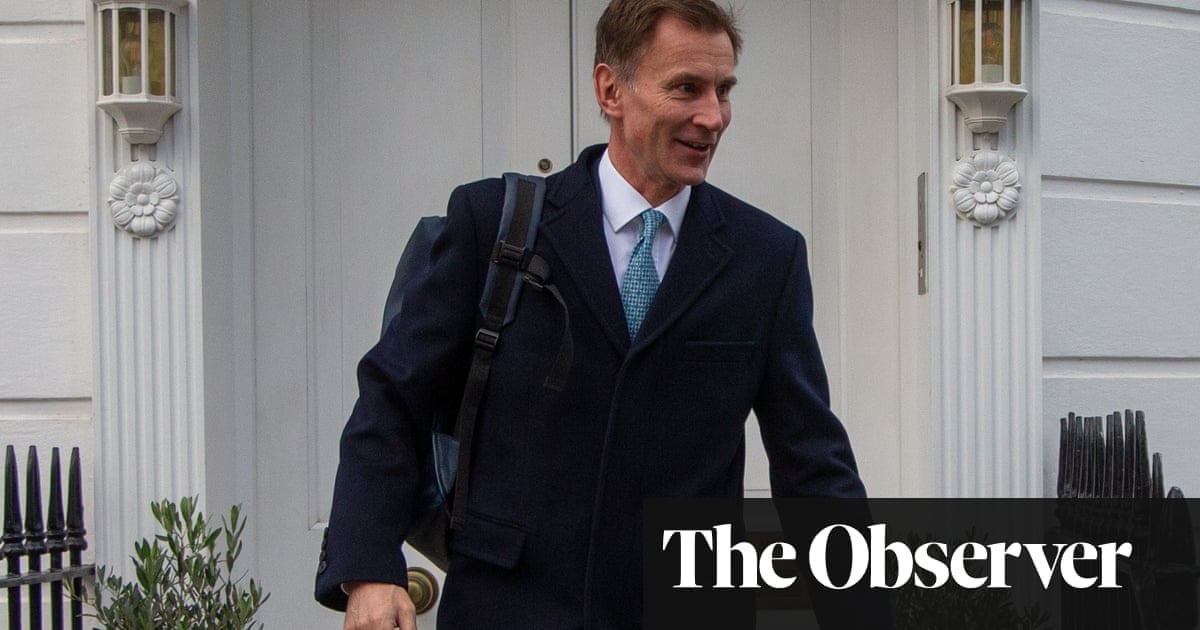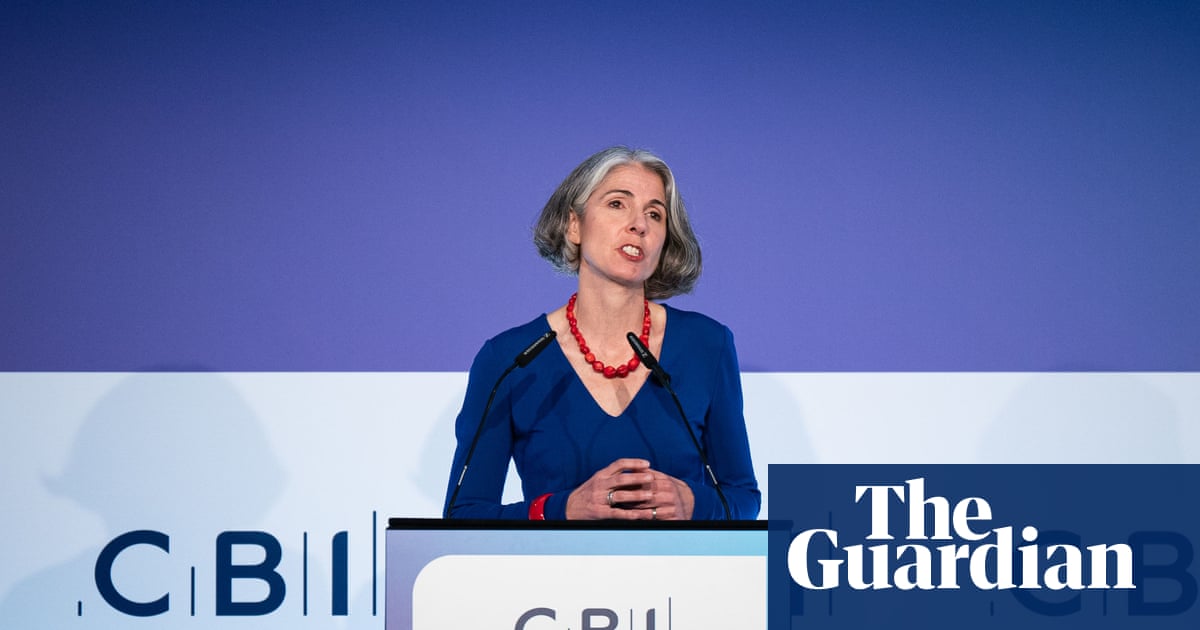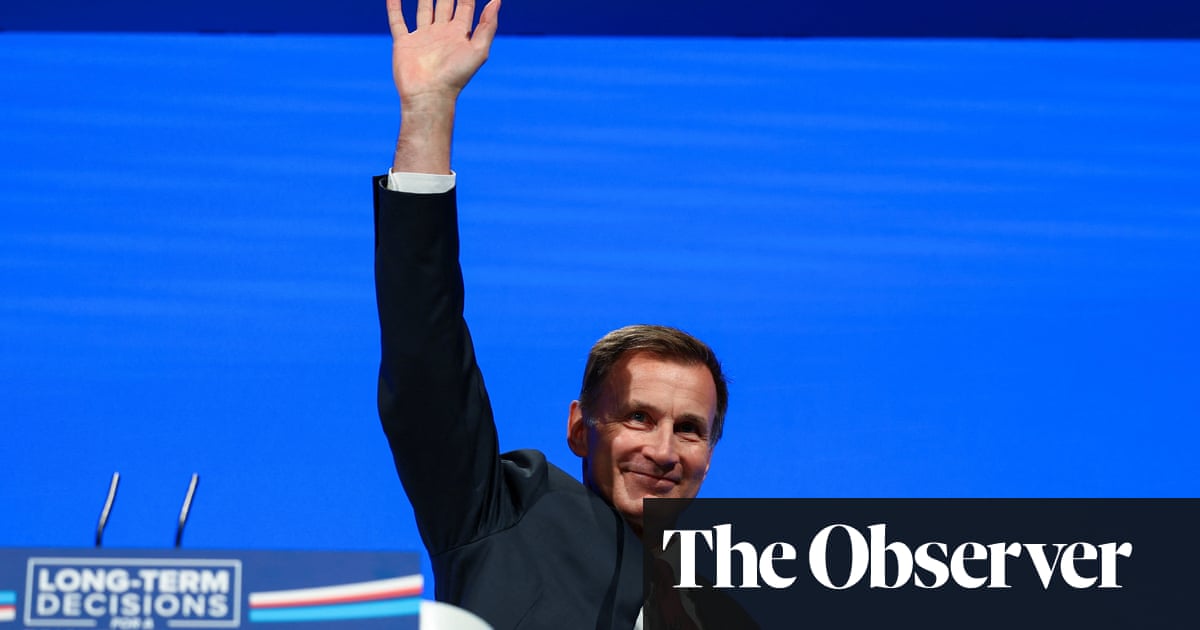
Liz Truss’s new chancellor, Jeremy Hunt, may still have to draw up spending cuts worth up to £40bn to convince markets the government can balance the books, experts warned after Friday’s humiliating U-turn.
Speaking at a Downing Street press conference, Truss dropped a heavy hint of austerity to come, saying: “Our public sector will become more efficient, to deliver world-class services for the British people, and spending will grow less rapidly than previously planned.”
Paul Johnson, the director of the Institute for Fiscal Studies thinktank, said that with high inflation already eating into Whitehall budgets, spending “can’t increase much less quickly without actually going down”.
Just two days earlier, when asked by Keir Starmer whether she would stick with her campaign promise that she would not cut public spending, Truss said: “Absolutely.”
Frances O’Grady, the general secretary of the TUC, warned against a fresh squeeze on the public sector in the coming years.
“Our NHS, schools and all our public services have been slashed to the bone over the last 12 years. There is nothing left to cut,” she said. “Hospital waiting lists are at record highs, school buildings are crumbling before our eyes and local services are on their knees.”
In her brief, awkward statement, Truss reinstated Rishi Sunak’s planned increase in corporation tax, worth almost £19bn a year, which had been a key dividing line between the pair during the summer leadership race.
The Resolution Foundation thinktank said that after cancelling Kwasi Kwarteng’s plan to scrap the top rate of tax earlier this month, Truss had now reversed 45% of her tax-cutting package.
Taking into account the sharp increase in government borrowing costs after bond yields were driven up by anxiety about the government’s plans, the thinktank suggested an “economic credibility gap” of £20bn to £40bn remains.
The foundation’s chief executive, Torsten Bell, said: “The need to fund the remaining tax cuts and darker economic outlook – including higher debt interest costs – mean that despite today’s U-turns, Jeremy Hunt has just two weeks to decide how to fill a black hole of several tens of billions of pounds in the public finances.”
Likely options for closing it by the time Hunt presents his plans for balancing the books on 31 October include slashing investment spending, alongside benefit cuts.
Truss has refused to spell out whether benefits will rise in line with inflation next April, as previously promised by Sunak. It is understood options for cutting the welfare budget are still under consideration, with some extending beyond the next general election.
It is unclear whether other aspects of Kwarteng’s “growth plan” could yet be ditched: his promise to bring back VAT-free shopping for foreign tourists is expected to cost the exchequer more than £2bn a year, for example.
Truss said: “We will control the size of the state to ensure that taxpayers’ money is always well spent.”
Truss and Kwarteng had hoped to convince the independent Office for Budget Responsibility (OBR), which will publish its own projections on 31 October, that their plans for boosting growth through tax cuts and deregulation would boost tax revenues. However, many economists believe the OBR is unlikely to endorse that view.
Details of so-called “supply-side reforms”, expected to include planning changes and deregulation of the childcare sector, are yet to be announced.












